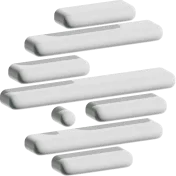
A startup’s organization plays a critical role in its success, especially the development team, which is the basic unit of every IT startup. A poorly thought out organizational structure plan leads to misunderstandings, business cycle downtime, and general inertia. Therefore, it is of utmost importance to invest time and effort in designing an effective startup organizational structure. Elite Dev Squad started as a startup, so we get it. To illustrate this article, we have designed the perfect startup structure framework for young technology-driven startups. Core organizational structure of a startup: At the core of a startup’s organizational structure, there are two important positions: the CEO and the CTO. This role can also be played by stakeholders and founders. These key roles are the leaders of the startup structure. Let’s take a look at the structure of the unit. The development team is divided into four units, each assigned specific responsibilities. We describe these teams and their roles within the startup structure below:
UX Team:
User experience (UX) teams are essential for almost every startup because they focus on creating smart, customer-centric, and aesthetically pleasing visual designs to give users the best possible experience. It is important. This team works closely with other departments to finalize the work. The proposed UX team unit model combines the efforts of the following members:
UX designer
Frontend developers
Team leader
Depending on the difficulty of the project discovery task, a UX researcher may be added to the team. Successful companies such as Airbnb and Google have proven that UX research plays a vital role in ensuring positive user experiences and product performance. The talented UX researchers create truly user-centric experiences by analyzing user behavior and providing valuable insights.

Backend Team:
The backend team is responsible for developing the app’s core logic, handling interactions with cloud providers, and facilitating communication with the frontend via API endpoints. Recommended organizational structures for backend teams include:
Team lead
Middle stack developers
Backend engineers
The team lead coordinates the workflow within the unit and supervises the work of backend developers. You may be wondering what role a middle stack developer plays. We believe these will improve the relationship between front-end and back-end developers and act as an intermediate chain. This saves front-end and back-end developers time without burdening them with middle tiers or API endpoints.
DevOps Team in the startup structure:
DevOps teams are integral to the processes and tasks surrounding cloud infrastructure. DevOps allows you to seamlessly integrate new code into your repository before deploying the new version and conducting a thorough code review. Their main goal is to ensure an optimal user experience at their level of responsibility and reduce time to market. Typically for DevOps units:
Team lead
Cloud Architect
Site reliability engineer (SRE)
System administrator
DevOps leaders manage teams, assign roles and responsibilities, and oversee workflows. Cloud architects are responsible for developing and maintaining cloud technology, while SRE specialists ensure that applications and systems run without interruption. System administrators are responsible for cloud management and support.
QA Team:
Quality assurance (QA) teams thoroughly test applications under development to identify and resolve bugs and errors to ensure consistent and reliable operation. The QA team consists of:
QA lead
QA Analyst
Testers
The QA lead manages and monitors the team, sets quality metrics and expectations for the product, and ensures they are met. The leader can also design test plans and distribute tasks among her team members. QA Analysts develop and implement test plans, including manual and automated tests, and design the necessary test documentation and unit tests. Testers perform tests, review system requirements, test scripts, analyze performance, and report to QA analysts and quality assurance officers.
Types of Startup Organizational Structures
Of course, startup organizational structures come in many forms. This depends on many factors such as the type of activity, goals achieved, and business patterns. Let’s explore the five main types:
Functional Structure
In this type of startup structure, a company is divided into departments or teams based on roles such as sales, marketing, IT, finance, human resources, etc. The advantage of this structure is that it improves performance and productivity by organizing resources according to purpose. However, it can create layers of bureaucracy.
Divisional Structure
This structure divides teams or units into larger departments based on geographic or product line criteria. Each department works with managers and teams to focus on a specific product or service line. Department heads establish separate departments for specific product/service lines. This creates a product-based system. For example, an apparel company establishes a product division for women, men, and children. Each of the three lines has its own marketing, sales, design, and customer service teams. Good for product growth, but can be costly due to duplication of effort. If you have different design teams in each department, you risk increasing overall business costs as the fabric supply is split into parts.
Geographic Structure
This type of corporate structure is tied to the geography of the region. Proximity to certain resources helps businesses operate cost-effectively. However, decentralization of large companies may occur, leading to strategic fragmentation. Each local unit can be self-contained without requiring significant effort to coordinate its actions with other units. Companies try to solve this challenge by ensuring a common understanding of the company’s goals and objectives.




